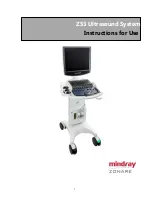
22
Troubleshooting
Harken equipment is designed for minimal maintenance, but some maintenance is required for optimum and safest possible operation and to comply with
the Harken limited warranty. In general, the most important aspect of maintenance is to keep your equipment clean by frequently flushing with fresh water.
In corrosive atmospheres, stainless parts may show discoloration around holes, rivets, and screws. This is not serious and may be removed with a fine abrasive.
With the exception of winches, do not use grease unless specifically recommended in the instruction sheet.
Flush blocks thoroughly with fresh water. Periodically, disassemble the blocks and clean with detergent and fresh water. Lubrication is not required.
IMPORTANT! Exposure to some teak cleaners and other caustic solutions can result in discoloration of part and is not covered
under the Harken warranty.
For additional safety, maintenance, and warranty information: www.harken.com/manuals or the Harken catalog.
Maintenance
Warranty
Problem
Probable Cause
Solution
Cars bind.
Slider damaged or missing.
Check and/or replace slider.
Too much friction.
Spray a small amount of McLube
®
Sailkote
™
lubricant
in underbody track slot of all cars. If possible spray cars
off boat. If this is not possible, use a drop cloth to keep
overspray off deck. McLube will cause slippery decks
which can result in loss of footing (page 16).
Stud threaded too tightly into receptacle.
Back off threaded stud two turns.
Cap screws and nuts are overtightened on plastic cars.
Loosen nut until screw end is even with plastic in nut.
Can't raise sail, cars stop at switch.
Car loaded upside down. Pins in car on wrong side.
Remove car, flip it around and reload.
Nut on Battcar is not holding.
Locknut has been used too many times.
Get new 6 mm locknut.
Batten receptacle does not rotate.
Nuts are too tight.
Loosen nuts slightly.
Cars jam when raising sail.
Headboard or cars are catching on Lazy Jacks.
Use topping lift or rod vang and shockcord to pull
Lazy Jacks out to shrouds.
Sail will not go all the way up.
Sail is too tall or sheave is too far forward.
Have sail shortened or move sheave aft.
Vertical post or pin on batten receptacle bending.
Reef loads are being transferred to batten receptacle.
Transfer reef downhaul and outhaul loads to mast
or boom gooseneck.
Reef tack fitting will not reach reef hook.
Reef point too close to sail attachment.
Move intermediate car sail attachment.
Problem
Probable Cause
Solution
Tracks do not butt up against each other.
Cut end of top or bottom track at joint.
Make sure the anodized end is toward the full-length track.
Track weight pulling tracks apart.
Tracks will come together when you loosen the
bottom screw and push the tracks up the mast.
Mounting slugs do not fit.
Slugs wrong size.
Different size slug required. Contact your dealer.
Mounting screws will not tighten.
Incorrect mounting slug used.
Different size slug required. Contact your dealer.
Track will not slide up mast.
Slugs catching on mast splice.
Loosen screws slightly. If necessary have someone
at splice area to wiggle the slug past the splice.
Corners of cut track catching.
Use file to round off corners of track.
Mast has too much prebend.
Ease backstay and/or straighten mast.
Paint or other material clogging mast groove.
Clean out groove.
Sail headboard does not fit inside coupler.
Ring was not pressed far enough.
Take sail to sailmaker.
Delrin is a registered trademark of E. I. du Pont de Nemours and Company or its affiliates. Loctite is a registered trademark of Henkel AG & Company KGaA.
McLube is a registered trademark of McGee Industries, Inc. SailKote is a trademark of McLube, a division of McGee Industries.



































